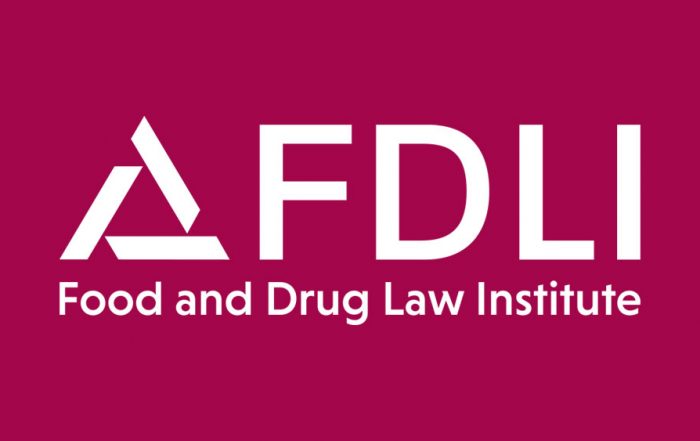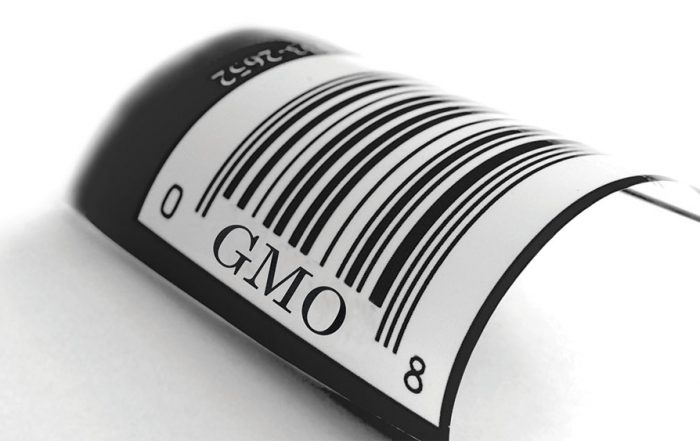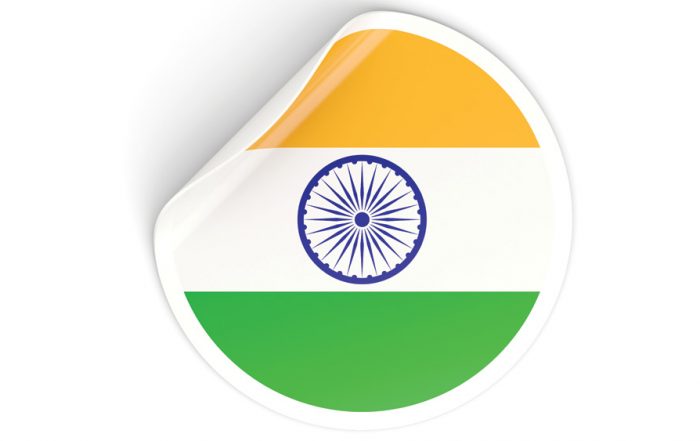
India: Paradigm Shift in Food Regulatory Environment
By Krishna Sarma
In 2015, headlines such as “Nestlé Withdraws Maggi Noodles in India after Food Scare” were splashed across national and international media. Indeed, initially six states and, subsequently, in June 2015, the national food safety regulator—the Food Safety and Standards Authority of India (FSSAI) banned Maggi Noodles nationwide. The national ban was instituted after tests allegedly showed packets exceeded the legal limits for lead; additionally, FSSAI alleged that the product label falsely indicated no added monosodium glutamate (MSG). Nestlé recalled and destroyed over 25,000 tons of the product as a good will gesture but challenged FSSAI’s directive before the Bombay High Court (BHC). The company contended that the ban orders violated principles of natural justice, that laboratories conducting the tests were not accredited by the National Accreditation Board for Testing and Calibration Laboratories (NABL), and that the Authority did not provide proper notification under the Food Safety and Standards Act, 2006 (FSSA). Additionally, the company asserted that the test reports were unreliable because the products were tested after their expiration dates, not tested per intended use, and not sealed during the three-month testing period. On August 13, 2015, the BHC lifted the ban, directing Nestlé to prove within six weeks that the product was safe through retesting at three independent NABL accredited laboratories. Nestlé also agreed to remove “no added MSG” from its label.
 FSSAI responded with a Special Leave Petition (SLP) to the Supreme Court of India (SCI) seeking reversal of the BHC judgment. FSSAI also sought an order to destroy 550 tons of stock at 39 locations that were past expiration, which Nestlé agreed to do. During the proceedings, the Central Food Technological Research Institute (CFTRI) submitted analysis reports on Maggi Noodles to the SCI indicating all 29 samples tested were clear. CFTRI clarified that there are no analytical methods to distinguish between naturally present glutamic acid and additive MSG. Glutamic acid can be due to the presence of ingredients like tomatoes, cheese, hydrolyzed plant protein, hydrolyzed vegetable protein, and others. Moreover, additive MSG is permissible in selected food commodities (such as noodles seasoning) under Good Manufacturing Practices for MSG labeling under India’s Food Safety and Standards Regulations, 2011. As of this writing, the SLP is still pending. Following favorable laboratory reports, on November 9, 2015 Nestlé re-launched Maggi in the Indian market.
FSSAI responded with a Special Leave Petition (SLP) to the Supreme Court of India (SCI) seeking reversal of the BHC judgment. FSSAI also sought an order to destroy 550 tons of stock at 39 locations that were past expiration, which Nestlé agreed to do. During the proceedings, the Central Food Technological Research Institute (CFTRI) submitted analysis reports on Maggi Noodles to the SCI indicating all 29 samples tested were clear. CFTRI clarified that there are no analytical methods to distinguish between naturally present glutamic acid and additive MSG. Glutamic acid can be due to the presence of ingredients like tomatoes, cheese, hydrolyzed plant protein, hydrolyzed vegetable protein, and others. Moreover, additive MSG is permissible in selected food commodities (such as noodles seasoning) under Good Manufacturing Practices for MSG labeling under India’s Food Safety and Standards Regulations, 2011. As of this writing, the SLP is still pending. Following favorable laboratory reports, on November 9, 2015 Nestlé re-launched Maggi in the Indian market.
Notwithstanding the BHC order, the Consumer Affairs Ministry simultaneously filed a complaint against Nestlé with the National Consumer Disputes Redressal Commission (NCDRC) seeking Rs 640 crore (USD 94 million) in damages for alleged unfair trade practices, false labeling, and misleading advertisements. Although Nestlé challenged the Commission’s jurisdiction based on the BHC’s dismissal of a similar plea, the NCDRC asserted its authority to continue to adjudicate the matter.
Another issue that grabbed headlines in 2014-2015 was the impounding of imported goods as mislabeled that provided FSSAI-required information by covering global labels with stickers. There was no prior notice of this action and the use of such stickers had been standard past practice. Highly valuable consignments of chocolates, sauces, mayonnaise, edible oils, alcoholic and non-alcoholic beverages, among others, were thus stuck at the ports. Additionally, requirements frequently were imposed without consideration of the nature of the product. For example, FSSAI insisted on a list of ingredients even for single ingredient food products. While many importers re-exported their products, or withdrew from the Indian market, some approached the courts for relief.
FSSAI’s stance in the Maggi issue and FSSAI’s yo-yoing on product approval and labeling requirements impacted India’s investment and business environment. In the Nestlé case, it was argued that FSSAI did not provide a fair opportunity for a hearing and rectification (of the label) and that the ban was imposed in a non-transparent and arbitrary manner. Moreover, the Indian regulator failed to meet its own conditions—for example, while it mandated reports from NABL accredited labs, it relied on reports that did not fulfill these criteria. Regarding product approval and labeling issues, companies had little choice but to seek relief from the courts. Courts have taken note of the implementation difficulties as well as the lacuna and penalties under FSSA, and have been providing relief to claimants while ordering reconsideration of the FSSA and its rules/regulations.
Indian Food Laws and Regulations
The events described above compelled the government and FSSAI to review the regulatory environment and administration of laws impacting food in India. Under India’s Constitution legislative powers are divided between the central government and the 29 states. “Foodstuffs including edible oil seeds and oils” and “Adulteration of foodstuffs and other goods” are subject to concurrent jurisdiction of the central government and the states: The central government passes the laws, and the states adopt and implement them. In the Maggi case discussed above, authorities in the state of Uttar Pradesh first tested and banned it, followed by five other states, and then the FSSAI banned it nationwide.
Prior to 2006, food regulation in India was governed by the Prevention of Food Adulteration Act, 1954 (PFA). The FSSA had the objective of shifting focus from just curbing food adulteration to an integrated science-based food law with a risk-based approach to food safety. FSSA consolidated under its umbrella all older laws, rules, regulations, and orders related to food, providing food standards, and regulating and monitoring the manufacture, import, processing, distribution, and sale of food. The Infant Milk Substitutes, Feeding Bottles & Infant Foods (Regulation of Production, Supply & Distribution) Act, 1992 (IMS ACT), Bureau of Indian Standards (BIS) requirements, the Legal Metrology Act, 2009 and Rules/Regulations thereunder and the Agricultural Produce (Grading and Marking) Amendment Act, 1986 with a risk-based approach to food safety continue to be applicable.
The implementation of the FSSA has been painfully slow and there were significant teething problems in operationalization of the FSSAI, and its Scientific Panels and Central Advisory Committee (CAC). Applications for product approval/standard setting filed under the erstwhile PFA regime were transferred to the FSSAI but were left unaddressed as the manner of assessment and rules were not in place. In 2008, FSSAI was established as an independent statutory authority under the Ministry of Health and Family Welfare (MoH). In 2011, the FSSAI Rules and six regulations were released.
The new regulatory regime raised significant concerns regarding FSSAI’s arbitrary and non-transparent procedures and frequent changes of regulatory requirements for food product approval, labeling, licensing, and import. The FSSA also lacked uniformity in implementation and harmonization with the internationally accepted Food Code standards established by the Codex Alimentarius Commission (Codex). Moreover, BIS and Legal Metrology have overlapping legal and regulatory requirements, which is a major barrier to providing an enabling environment for industry. In 2015, the Department of Industrial Policy and Promotion (DIPP’s) Expert Committee on Regulatory Approvals under the aegis of Ease of Doing Business recommended that in absence of a specific Indian standard, the Codex standard should be the basis of approval until an Indian standard is developed. It also suggested establishing a regime of approved ingredients/food additives and products that do not require prior approval. The emphasis was on simplification and rationalization of the existing rules and introduction of information technology to make governance more efficient and effective.
The FSSAI is aided by the CAC, which has representatives from industry and government, ensuring close cooperation between FSSAI, enforcement agencies, and organizations operating in the field of food. The CAC also advises FSSAI on developing its work program, identifying potential risks, knowledge sharing, and other issues. The Scientific Committee provides FSSAI scientific opinions (currently there are sixteen panels on subjects such as labeling, additives, nutraceuticals, contaminants, milk products, water and beverages, etc.). FSSAI has also set up a Standards Review Panel to identify gaps in the existing Indian food standards as compared with international standards.
Key Developments in 2016
In the past year, there have been significant developments in this space. The MoH and FSSAI have aligned Indian standards with Codex. FSSAI has also attempted to transform itself into a facilitator and an enabler rather than a regulator de rigueur. The authority launched consumer outreach initiatives on diets for children with metabolic disorders, consumer empowerment mobile applications, and a food safety knowledge assimilation network, among others. FSSAI is also partnering with organizations such as the Advertising Standards Council of India (ASCI) as well as stakeholders like the Confederation of Indian Industry (CII), Hindustan Unilever Ltd., Tata Trust, and PATH to address misleading advertisements, food fortification, and skill development.
Significantly, in 2016, FSSAI also established twenty-four standards and issued twenty-seven draft notifications soliciting comments from stakeholders.
The key regulatory developments of 2016 are:
1. Standard for proprietary food and product approval
On October 04, 2016, draft Food Safety and Standards (Approval of Non-Specified Food and Food Ingredients) Regulations, 2016 were issued for product approval for import, manufacturing, marketing, and distribution of “Proprietary Foods” in India. The draft includes approval based on ingredients as well as on recipes and establishes a simpler process for approvals. According to FSSAI, since 2014 premarket approval has been pending for about 2,500 products; given these regulatory changes about 90% of the product categories are now exempted from approval.
Subsequently, on October 10, 2016, FSSAI released the standard for Proprietary Foods. However, there are some niggling concerns. First, it provides that proprietary foods may contain vitamins and minerals in quantities not exceeding one RDA of the respective micronutrients. Another major concern for industry is the prescription that “no health claims shall be made in respect of proprietary foods either on the product label or
otherwise.”1
2. Food additives
FSSAI finalized a list of 11,000 permissible food additives via final Gazette Notification dated September 05, 20162 thereby harmonizing horizontal standards for food additives used in certain food categories. Although industry welcomed the clarity these regulations provide, a few issues remain unaddressed including compliance timelines, further alignment with CODEX, and the lack of functional categories for additives.
3. Removal of zinc as a contaminant
After significant advocacy efforts from industry, zinc was removed from the list of contaminants.3 FSSAI recognized that zinc is a micronutrient required in small quantities for daily metabolism. The move supports nutrition in India, where micronutrient deficiency has a long history.4
4. Food imports
FSSAI initiatives to facilitate trade and import of food items into the country includes increased appointments of Customs Officers, the operationalization of the Food Safety and Standards (Food Import) Regulations, 2016 effective beginning July 15, 2016,5 initiation of the Customs Single Window Interface for Facilitating Trade (SWIFT)6 and establishment of two committees to resolve food importer grievances.7
The single omnibus draft Food Safety and Standards (Food Import) Regulations, 2016 consolidates guidelines on various aspects of food importation, such as labeling, clearance processes, restricted items, importation for tasting and exhibition, sampling, and inspection notes.
The detailed instructions on imports through SWIFT are a major change, since they replace multiple documentation and schedule requirements. The regulations also provide detailed packaging and labeling norms for imported food and a scheme for risk-based food import clearance with a special provision for post-clearance surveillance and inspection. Despite being a welcome move by FSSAI, the regulation suffers from several shortcomings, such as random checks on imported food, broad discretionary powers to Customs Officers to recommend license cancellations or suspensions, lack of timelines for inspection and sampling, and overall lack of implementation at the ground level.
5. Food for infants and children
The July 09, 2016 notification allowing supplementation of infant formula and follow-up-formula with docosahexaenoic acid (DHA) and arachidonic acid (ARA) was a hard-won victory for industry.8 Additionally, on November 24, 2016 FSSAI established a two-year grace period for importation of Foods for Special Medical Purposes (FSMP) while standards are developed.9
Comprehensive standards for infant food and complementary foods for children are also under development.
6. Nutraceuticals
Regulations for nutraceuticals in India have always been a gray area. The blurred line between drug and food supplements became apparent in 2009 when the National Pharmaceutical Pricing Authority (NPPA) opined that pharma firms were marketing drugs as food supplements to escape price controls. The question of whether health supplements are drugs or food supplements came before the Patna High Court10 and as per that court, a Sub-committee on Nutraceuticals was constituted by the Drugs Technical Advisory Board (DTAB) under MoH to analyze nutraceutical ingredients.
On November 24, 2016, FSSAI set forth standards for Health supplements, Nutraceuticals, Food for Special Dietary Use, Food for Special Medical Purpose, Functional Food, and Novel Food.11 Industry has one year before compliance is effective.
A few concerns have emerged with these regulations: They omitted or deleted some ingredients that have a history of safe consumption in India and the criteria for claims need to be harmonized with CODEX substantiation criteria. Moreover, prior approval may now be required for omitted nutraceuticals even where safety has been established in India or another country. This may act as an impediment to the introduction of innovative specialty food products in the country.
7. Food fortification
Food fortification is central to meeting the nutritional requirements of Indians, especially to address malnutrition in children and women. In October 2016, FSSAI adopted fortification standards for milk, edible oil, salt, rice, wheat flour, and flour.12 The regulations include standards on micronutrient content in fortified food as well as norms for quality assurance, packaging and labeling, and promotion.
FSSAI also released a Joint Declaration endorsing fortification of common foods including edible oil, milk, wheat flour, rice, and salt with vitamins and minerals. FSSAI is also likely to come up with fortification standards for packaged food products such as cereals and biscuits.13
8. Foods with high fat, sugar, and salt
FSSAI first constituted an Expert Group on High Fat, Sugar and Salt (HFSS) pursuant to a Writ Petition filed by an NGO in the Delhi High Court (DHC) in 2010.14 On April 23, 2014, draft guidelines on junk food were filed before the Court. Subsequently, an Expert Panel produced the “Report on Fat, Sugar and Salt (FSS)- Consumption and its health effects among Indian Population and Recommendations on healthy dietary intake of FSS” for consideration and approval by the XXV Scientific Committee Meeting on October 3, 2016.
The report, which provided recommendations for consumers, FSSAI, and industry, addressed the critical role of food labeling as the primary interface between suppliers and consumers. FSSAI is preparing draft rules to ensure uniform display of levels of sodium, sugar, and fats, including cholesterol and trans-fat, in all packaged and processed food. FSSAI is also seeking to restrict disguised promotion of foods high in fat, salt, or sugar in schools and mass media with the help of the ASCI.
What to Expect in 2017
FSSAI is currently establishing a Food Safety Standards Review Panel to identify gaps in the existing standards for safe and nutritious food in comparison with international standards.15 The authority is also introducing third party auditing and food inspections. Additionally, food recall regulations are expected.
In 2017, FSSAI is also planning to strengthen the capacity of food safety labs and of master trainers in food safety standards as well as overhaul its inspection procedures.16 The aim is to make the regime self-regulatory and reduce business perception of harassment. According to news reports, the food regulator will implement more structured procedures to avoid ad hoc inspections while adding 200 inspectors at the central level. Surveillance will be tightened at the state level as well. FSSAI is likely to divide food into five risk categories; food in lower risk categories will be inspected less frequently.
Overall, FSSAI has indeed taken huge strides in 2016, and with steps to be taken in 2017 the hope is that a fair, transparent, meaningful, and predictable regulatory environment for food will be established.
- Gazette Notification on FSS (Food Product Standards and Food Additives) Ninth Amendment Regulation, 2016 related to standards for proprietary foods dated Oct. 10, 2016.
- Gazette Notification on FSS (Food Product Standards and Food Additives) Amendment Regulation, 2016 related to harmonization of horizontal standards for food additive for use in certain food categories dated Sept. 05, 2016.
- Gazette notification of FSS (Contaminants, Toxins and Residues) Fourth Amendment Regulation, 2016 regarding removal of Zinc as metal contaminant from list of contaminants dated Oct. 04, 2016.
- Food and Beverages News; http://www.fnbnews.com/Top-News/fssai-notifies-removal-of-zinc-from-fss-contaminants-regulations-2011-39675.
- Direction under S. 16 (5) of the FSSA, 2006 regarding operationalization of FSS (Import) Regulations, 2016 dated Sept. 02, 2016.
- Circular No.- 10/2016-Customs (F.No.450/147/2015-Cus-IV) issued by Central Board of Excise and Customs dated March 15, 2016.
- FSSAI Office Order issued on November 24, 2016.
- Gazette Notification on FSS (Food Products Standards and Food Additives) Fourth Amendment Regulations, 2016 dated July 13, 2016.
- Direction {F. No. Stds/Nutra-IEM/FSSAI-2016 (Pt. F1)} under S. 16 (5) of the FSSA, 2006 regarding import of specialty foods for IEM disorders dated Nov. 02, 2016.
- Ranbaxy Laboratories Limited and another vs UOI and others (CWJC No 2425 of 2006).
- Direction (F. No. 1-4/Nutraceuticals/FSSAi-2003) under S. 16 (5) of the FSSA, 2006 regarding standards for Health supplements, nutraceuticals, FDSU, FSMP, etc. dated Nov. 22, 2016.
- Notification (File No. 11/03/Reg/Fortification/2014) on draft FSS (Fortification of Foods) Regulations, 2016 dated Oct. 04, 2016.
- Indian Express; http://indianexpress.com/article/india/india-news-india/fssai-food-safety-packaged-food-products-food-fortification-4375950/.
- W.P.(C) 8568/2010; Uday Foundation for Congenital Defects and Rare Blood Groups vs. UOI and Ors.
- Economic Times; http://economictimes.indiatimes.com/industry/cons-products/food/fssai-to-set-up-food-safety-standards-review-panel/articleshow/55458944.cms.
- Money Control; http://www.moneycontrol.com/news/business/fssai-plans-to-overhaul-inspection-procedures-next-year-sources_8133681.html?utm_source=ref_article.
Update Magazine
January/February 2017







